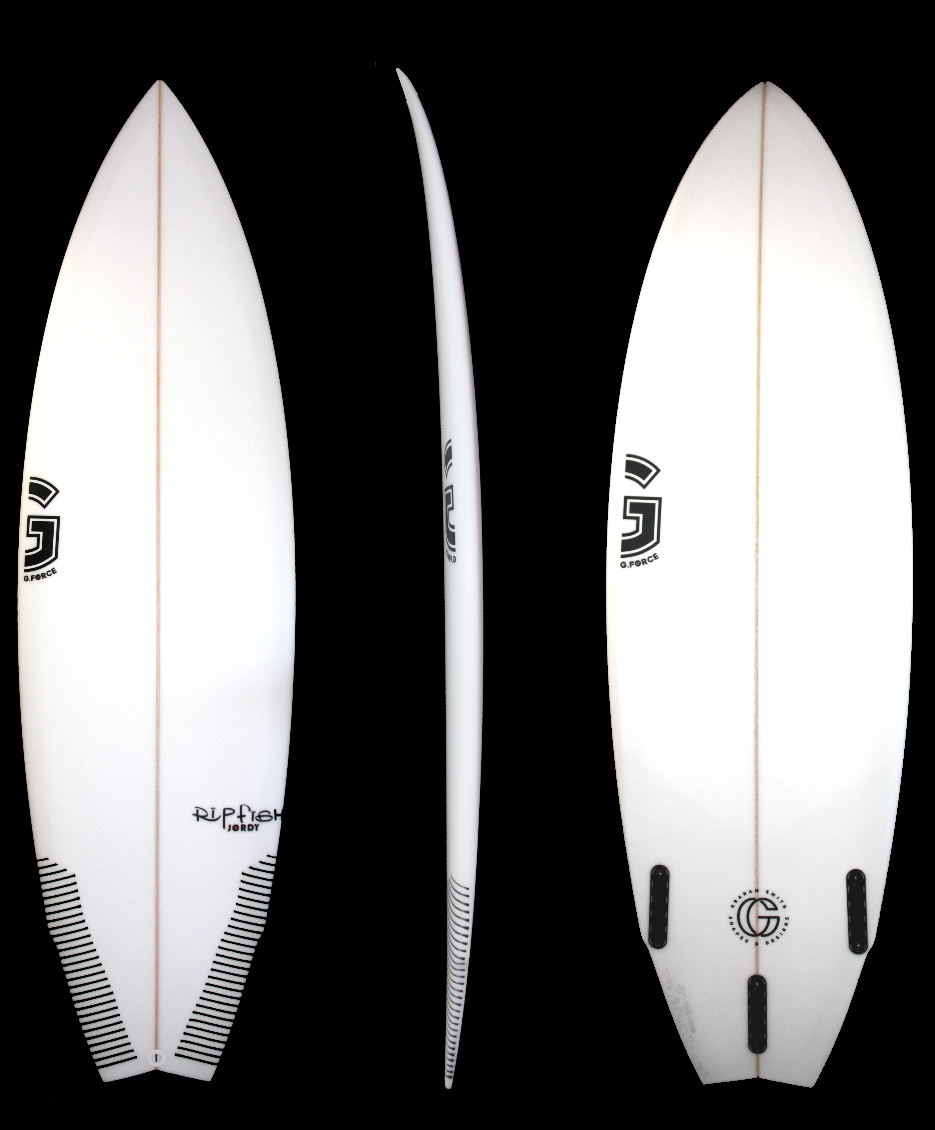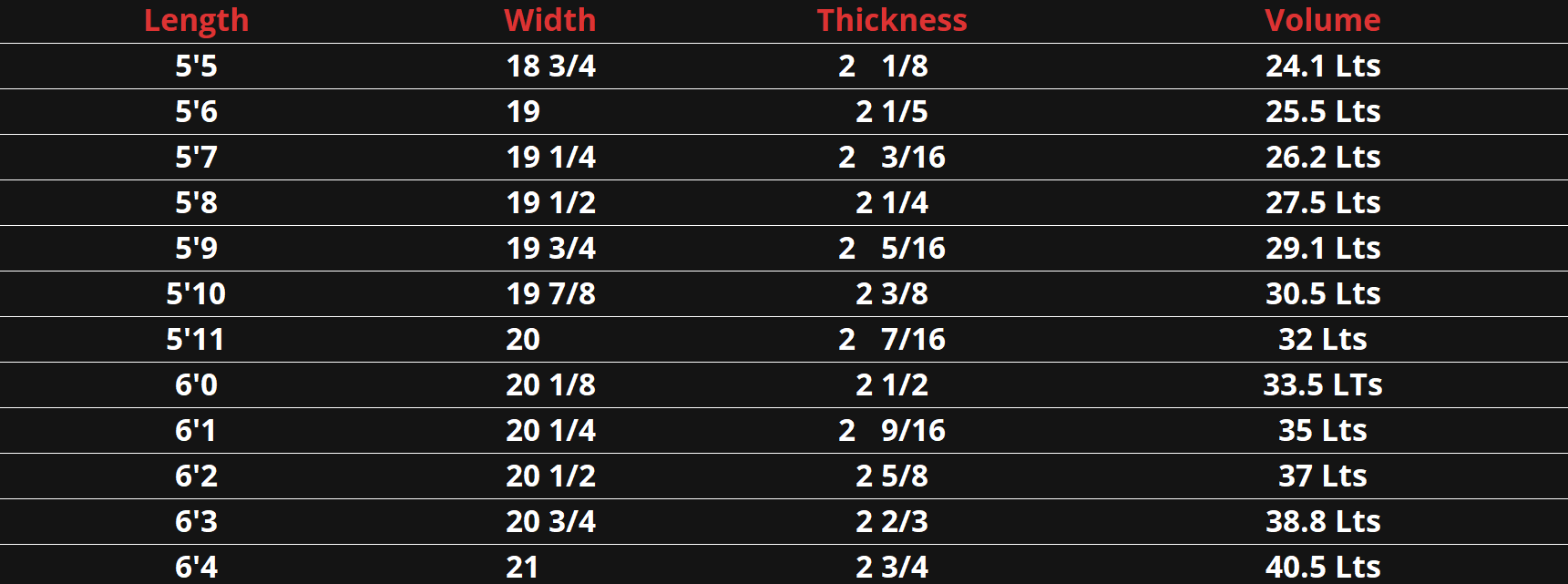Rip Fish
Our new RipFish Chine design is about offering the best of both-worlds. A popularized mixture of modern and traditional shapes from the 70’s & 80’s by incorporating, and adjusting the MR twin outlines. This cross-breeding gave birth to a stealth high performance swallow tail thruster with more bottom-deck functional features. We have added something old, yet new! A pronounced “Chine”- also known as a “beveled-rail” that has been cut into the bottom edge of the rail, basically sheared off and flattened, giving us “two” release points as the rail engages when turning. The water will break, and release more quickly from the Chine as the board moves, and cuts through the water, even in choppy conditions – as compared to the conventional rail, and thus gives increased speed. The Two-part bottom configuration reduces drag as we have reduced the bottom surface area which enhances the concave even more, allowing water to pass through quicker. The acceleration through the turns are extremely quicker because the rail releases easier. This board will change your approach when surfing small to head-high waves, and can be ridden 2” to 3” shorter than your height. The wider tail gives us more fin options at beach-breaks and Quads are used when hauling it down the JBay walls. A surf traveler’s dream board for all seasons as versatility is our main objective here!


Shaper Notes:

I first started shaping concaves in 1979 when I took over Shaun Tomson surfboards, and I’ve been hooked on the speed that concaves produce since then. However they can suck onto the wave face at times at high speeds, and have a tendency to catch rails if done too deep close to the rail edge. I was shaped a chine rail in 1986 by Californian Lonnie Buhn which made my concave “user friendly”, and found that it worked really well, especially in the chop.
It’s a basic design, as the apex-chine of the rail is raised up as the rail starts to tuck under onto the bottom of the board, it flattens out about 2″to 3″ wide, (depending how wide your board is) pitching up to the apex-chine, and then only the concave starts to descend towards the stringer. With the chine running out at the wings, almost to the tail, the board will come up on its rail very easily, much like a “V” but again with no loss of speed. By incorporating the chine-rail, it produces a board that is fast – responsive – loose and really forgiving when changing rail to rail.


